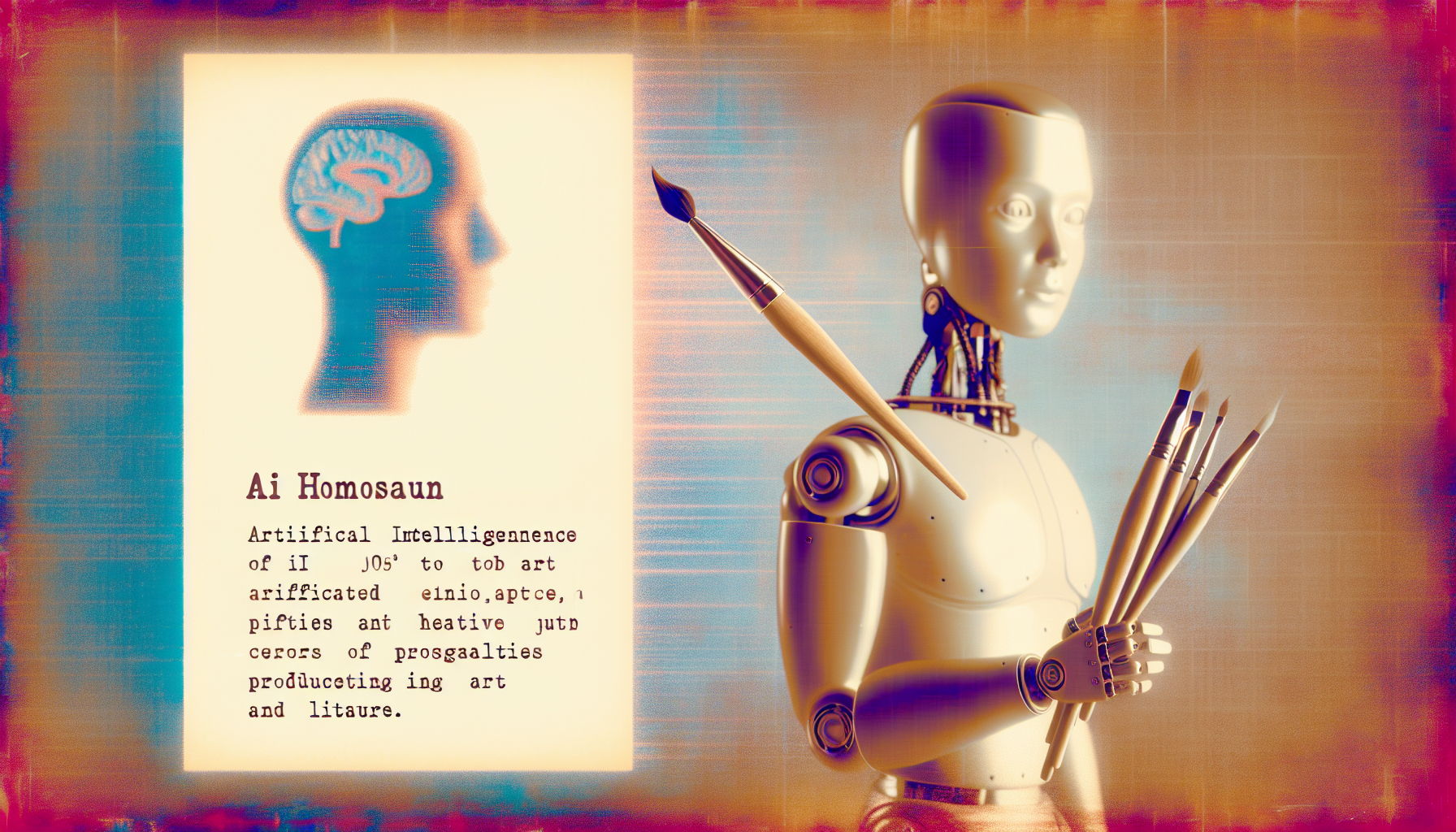As we increasingly integrate artificial intelligence into the fabric of our everyday lives, a compelling debate emerges: Is AI merely a mimic of human invention, or can it truly be creative? In other words, when AI churns out a painting or crafts a novel, is it operating as a glorified mimic or an authentic creator? This question is at the heart of understanding AI’s role in the future of innovation.
Mimicry: Teaching an Old Machine New Tricks
Imagine an artist who only copies the masterpieces of others. Although they may have honed technical skills, their work lacks the spark of originality. AI often finds itself in a similar situation, learning from vast datasets created by humans. Through this process, it understands patterns, styles, and techniques that have already been explored. Armed with this knowledge, AI can produce things that look original at first glance—a melancholic sonnet, a catchy pop song, or even a colorful abstract artwork.
But does this mean the AI is being creative? Or is it just cleverly copying elements, piecing them together in ways we’ve taught it to over time? After all, mimicry is the backbone of machine learning. For many, this feels less like creativity and more like a computerized impersonator, twisting and remixing what already exists to create something ostensibly “new.”
Creativity: The Human Touch
The counterargument to AI-as-copycat points towards its ability to exhibit forms of creativity—or what could be dubbed “artificial creativity.” Unlike an artist restricted by human constraints, AI isn’t bound by culture, experience, or bias. Instead, it absorbs a multitude of influences, even obscure ones that might not cross a human’s creative path. It can suggest unexpected pairings, line breaks, or chords that defy tradition. In a sense, AI can become an alien magician revealing tricks yet unseen by the human eye.
The question remains whether these acts of creation reflect any semblance of understanding or intention. Is AI aware of why a haunting melody evokes sadness, or does it merely recognize it as a statistical anomaly? One might say creativity requires intention, a characteristic that machines haven’t quite mastered yet—though who knows what those mysterious algorithms dream at night?
Imitation Game: Innovation vs. Novelty
To dissect this further, consider two forms of innovation: incremental and radical. Incremental involves making improvements upon existing systems, whereas radical signifies pioneering new, disruptive paths.
In the realms of incremental innovation, AI excels. It identifies patterns and outcomes, fine-tuning systems for optimization. It’s comparable to having a robotic efficiency expert on permanent staff, always willing to tinker and tweak for better results. An AI-enhanced assembly line, for instance, becomes remarkably faster and more accurate, cementing AI as a paragon of productivity.
Radical innovation, on the other hand, often stems from a need to challenge the status quo, driven by dissatisfaction or a stroke of inspiration. It’s a detour from convention that questions the limits of the possible. Imagine the industrial revolution, powered not just by steam but by the fiery sparks of human imagination.
For AI, achieving radical innovation is a far greater challenge. Without the innate qualities of intuition and motivation, machines struggle to leap organically from mimicry to genuine novelty. The spontaneous eureka moments that lead to radical shifts are bound by unpredictability and randomness—two qualities machines aren’t particularly fond of.
Finding the Balance
The nuanced dance between AI’s mimicry and creativity isn’t just about winning a debate. It’s about unlocking the symbiotic relationship that can emerge. Think of it as a jazz duet where human and AI take turns leading and following, keeping the rhythm of innovation alive.
In essence, AI can innovate creatively with humans providing context. By merging our inventive instincts with AI’s analytical prowess, we cultivate an environment where ideas can cross-pollinate. For instance, in drug discovery, AI can process millions of molecular comparisons while human researchers interpret those findings, chasing paths only an intuitive, inquisitive mind might follow.
Humans: The X-Factor
While AI holds the promise of endless computation, humans offer a depth of emotional resonance and subjective experience that machines cannot replicate. It’s our very flaws, hesitations, and emotions that give birth to the ideas that AI can’t predict—yet. Perhaps AI’s greatest contribution to creativity lies not in replacing human creativity, but in augmenting and amplifying it.
Much like a historical figure who spent their life perfecting their craft, AI continuously learns, refines, and enhances its abilities. As we inch closer to a potential future dominated by AI, it’s not so much about assessing whether machines are inherently creative but rather how they will inspire us to redefine creativity itself.
Will AI eventually add new strokes to the canvas of innovation or merely rehash the past with a fresh coat of digital paint? The answer might lie just beyond the reach of what it means to be human.

Leave a Reply